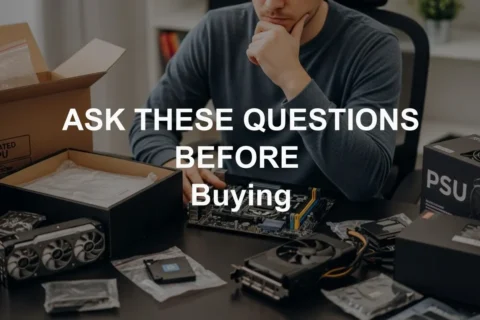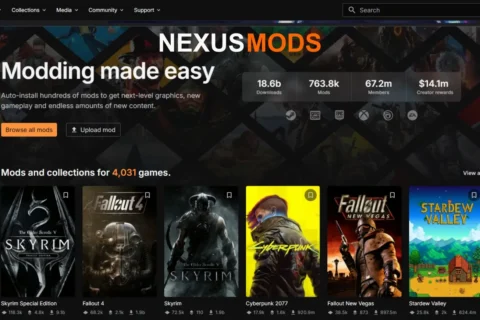Updated September 18, 2025: This guide now includes 2025 threats like AI-assisted phishing kits, SIM-swap protection, and automated breach monitoring. I also added a tighter, step-by-step checklist and authoritative resources.
Step 1: Know What You’re Up Against
So what to do after a data leak? First, understand this: attackers don’t always need to “hack” anymore. Thanks to automation and cheap data dumps, they can just buy your info. It’s not just your email. We’re talking names, passwords, addresses, sometimes even payment hints or medical details. All bundled into what sellers call “fullz,” as in full identity profiles.
These profiles fuel scams, account takeovers, and impersonation. Sometimes it’s targeted, sometimes it’s spray and pray. The end goal is always the same, get into something valuable. If you’re running Windows and want to tighten things up, check out my Fix Windows 11 Problems guide.
Step 2: Check What’s Already Out There
Before you start locking things down, find out what leaked. Use breach-monitoring tools. Most premium password managers include this, and you can also check Have I Been Pwned.
These tools scan known breach corpuses and flag exposed emails, passwords, and credentials. You can’t delete what’s already out there, but you can contain the blast radius. Once you see what’s compromised, you know which accounts to prioritize. And while you’re here, take a breather with something fun — my list of Best PC Games for 2025.
Step 3: Reduce Your Digital Footprint
If it’s not online, it can’t be stolen. Simple.
Data brokers collect everything, from your favorite stores to that newsletter you signed up for in 2012. They package and sell this data at scale.
Removing yourself is possible but tedious because there are hundreds of brokers. You can DIY the opt-outs, or use a personal data removal service to automate ongoing removals and rechecks. Think of it like a digital janitor that keeps sweeping after the initial clean. If you’re into DIY fixes, my Game Mods Guide shows the same no-nonsense approach applied to gaming mods.
Step 4: Fortify Your Setup

You wouldn’t run a high-end build without proper cooling, right? Treat your security stack the same way, layered and boring on purpose.
Here’s your checklist:
- Turn on multi-factor authentication everywhere. A password alone is not enough anymore.
- Use strong, unique passwords generated by a manager like Bitwarden or KeePassXC.
- Keep antivirus and firewall protection active. Don’t disable it just because a launcher complains. See why that matters in my Future-Proof PC Build 2025 article.
- Use a VPN on public Wi-Fi, and avoid logging in to sensitive accounts on shared networks.
- Never click links in random emails or DMs. Type the site address yourself, every time.
- Update your OS, browser, drivers, and apps. Unpatched software is low-hanging fruit. For more fixes, head over to Windows 10 and 11 Problems and How to Fix Them.
- Patch everything else too, routers and smart home gear included.
- Set up breach monitoring in your password manager, and rotate passwords that show up in leaks.
- Use an authenticator app instead of SMS 2FA where possible.
- Set recovery methods now for email, banks, and critical logins, phone, backup email, security keys.
- Freeze your credit if your country supports it, and enable transaction alerts on banking apps.
- Call your mobile carrier to add a SIM-swap PIN or port-out lock.
If You’re Already Seeing Attack Signs
- Password reset emails you didn’t request, log in and change the password immediately, then enable MFA.
- New device login alerts, revoke the session, change the password, and review recovery settings.
- Bank or card notifications, lock the card, call the bank, file a dispute if needed.
- Email rules you didn’t create, delete them and audit third-party app access.
Want more PC-side hardening tips while you’re here? See my running list of fixes and sanity checks in PC Performance Fixes.
Step 5: Recap and Final Thoughts
This isn’t flashy like a new GPU. It’s maintenance. The boring stuff that keeps your accounts and your real life intact.
We’re not powerless. Some data is already out there, fine. Your move is to patch your weak spots, reduce what’s exposed, and make yourself a painful target.
Patch it. Lock it down. Keep moving forward.
Because in this game, being careless is the cheat code they’re using.
Further Reading
Level up with authoritative resources:
- Have I Been Pwned — check if your email appears in known data breaches.
- FTC: Identity Theft Resources — official guidance on recovery steps and reporting.
If you want the same no-BS breakdowns for your gaming rig, don’t miss my Best Budget PC Build 2025 guide.


















